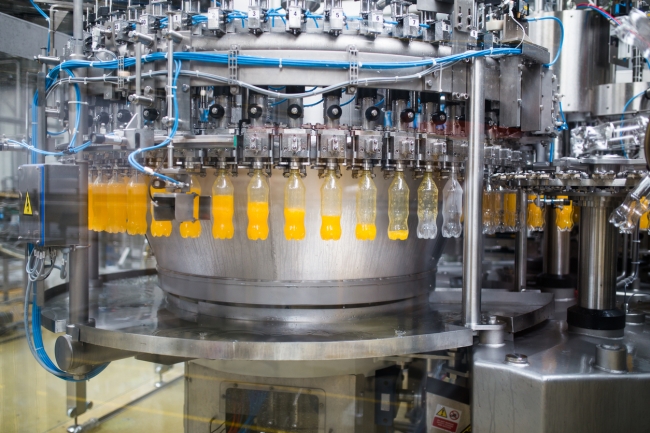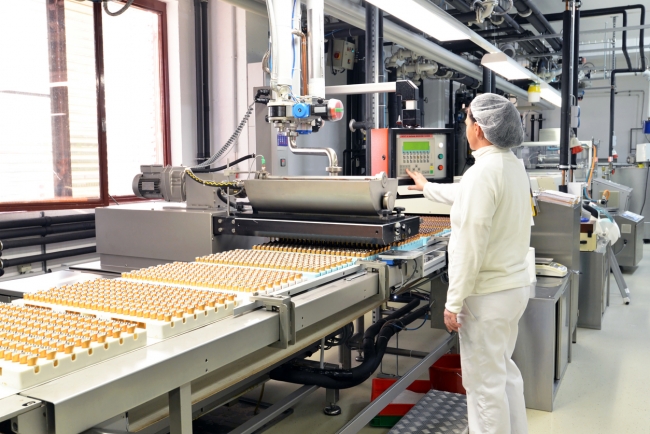5 minute read • published in partnership with K3 Syspro
Feature: Putting traceability top of the agenda
The threat of costly product recalls is having a significant impact on businesses across the manufacturing sector. Leadership teams are coming under increased pressure to track and account for every stage of the production process. They are having to focus much more closely on issues such as health and safety regulations; the challenges of global supply chains and cost-cutting; an increase in malicious product tampering and extortion; growing consumer awareness and the influence of social media. In response, traceability software, crisis management plans, and mock recall simulations are now essential rather than nice-to-haves. Paulo de Matos, from SYSPRO, insists our Movers and Makers shouldn’t be hoping for the best but planning for the worst.
Increased regulatory compliance requirements
As governments around the world attempt to improve standards in food and product safety, they are increasing their regulatory requirements. If your business does not have an effective traceability system, you can potentially be excluded from lucrative new markets, or lose existing markets to those who can clearly show the effectiveness of their traceability system.
In the UK, legal requirements under Article 18 of Regulation (EC) No. 178/2002 states that: “The traceability of food, food-producing animals, and any other substance intended to be, or expected to be, incorporated into a food shall be established at all stages of production, processing and distribution… To this end, such operators shall have in place systems and procedures which allow for this information to be made available to the competent authorities on demand.”
The EU’s General Food Law (2002) makes traceability compulsory for all food and feed businesses. It requires that all food and feed operators implement special traceability systems. They must be able to identify where their products have come from and where they are going and to rapidly provide this information to the relevant authorities. Businesses operating within the EU must ensure they comply with RAPEX: European Consumers Product Safety and Market Surveillance Regulations and the EU Food Information for Consumers Regulation.

By having the right traceability system in place, businesses can both improve the effectiveness of a recall and dramatically reduce the time it takes to complete / Picture: Getty/iStock
In addition, the ISO 9001:2015 Quality management System has a clause stating that any company wanting to achieve or retain their ISO 9001 Quality accreditation will need to have a traceability system.
While regulatory compliance is a major driver for organizations deciding to implement traceability systems, there are other factors at play. Sound management practice demands minimizing risk and mitigating damage to the brand in the face of a recall.
Understanding the costs
Allianz Global Corporate & Specialty’s (AGCS) 2017 report titled: ‘Product Recall: Managing the Impact of the New Risk Landscape,’ revealed that the average costs of a recall can exceed US$1.65 million, rising to over US$14.5m, and almost US$9.42m for significant claims in automotive, and food and beverage respectively.
The report found that product or work defects were the cause of around 80% of recall claims, followed by product contamination (12%) driven by the food and beverage sector. Ten of the largest product recall claims were responsible for over 50% of the value of all analyzed claims. Nine of the top ten largest claims came from the automotive sector which was responsible for 71% of the value of all losses analysed.
The report also stated that the total-loss bill from the largest recall events has the potential to rise into the hundreds of millions, or even billions of Dollars when additional factors such as loss of sales and reputation, penalties, fines and litigation were considered. Additional costs that add to that figure include identification and tracking of defective products; repair, disposal and replacement; use of third-party consultants; laboratory testing and investigative costs; sanitizing contaminated factories; and rehabilitation costs to help restore the brand.
Things do go wrong
While we all hope they won’t, things do sometimes go wrong. What’s most important is the way you respond. Depending on what you produce, this can make the difference between potentially saving lives and rebounding from the situation; or putting lives at risk and losing a brand or business.
It’s not enough just to have visibility of the data you need to isolate the problem, such as the origins; builds; and customer destinations of products. A good ERP system with an integrated Traceability system will also allow you to take immediate steps to minimize the impact of a product recall. These steps include being able to quarantine products, as well as to trace and report on the location of affected products in the supply chain. All these steps are required to help you mitigate reputational damage and the associated financial impact.
The Recall management team must be able to quickly access the necessary information and act on it with speed. In acting quickly, you can potentially mitigate the size and cost of the recall, as well as limit potential danger to consumers by alerting them as soon as the problem is identified.

Leadership teams are coming under increased pressure to track and account for every stage of the production process / Picture: Getty/iStock
Additional benefits of a strong traceability system include greater control over quality, sustainability and helping assure customer safety. If you can rely on a robust traceability system, others within the business have the confidence to get on with their jobs at times of crisis and trust that everything is in hand.
Arguably the biggest ongoing global recall to date is the replacement of faulty airbags manufactured by Japanese firm Takata. The defective airbags were supplied to around 20 global manufacturers including Honda, Nissan, Volkswagen, Jaguar Land Rover, BMW, Toyota, Subaru, Mercedes, Mazda, and Mitsubishi. They then fitted these airbags to as many as 60 million cars.
Most of the affected cars were manufactured between 2000 and 2015 and Honda was the first manufacturer to issue the recall notice three years later. To date, 23 people worldwide have died as a result of the exploding airbags, with 300 more injured. It has proved to be one of the most complex and costly recalls in history and was a disaster the company never recovered from. Takata filed for bankruptcy in 2017 and its leadership team faces criminal charges.
Traceability has played a major role in the Takata disaster. While the company may have identified and notified automotive manufacturers it supplied to, there is still a massive second-hand vehicle market globally, and tracing all owners of the affected vehicles has proved difficult. Notices are still being issued for further recalls as more faulty units are being identified.
Planning for the worst helps you operate at your best
Manufacturers must ensure they have a comprehensive traceability plan in place. That includes having a product recall plan tested through regular “mock recalls” to guarantee it meets both regulatory and supply-chain partner requirements.
Among other things, you need your system to trace and account for every suspect item throughout the value chain; track lots; have good contact management to quickly identify and begin correspondence with affected customers; and be able to swiftly handle faulty merchandise returns. By having the right traceability system in place, businesses can both improve the effectiveness of a recall and dramatically reduce the time it takes to complete.
